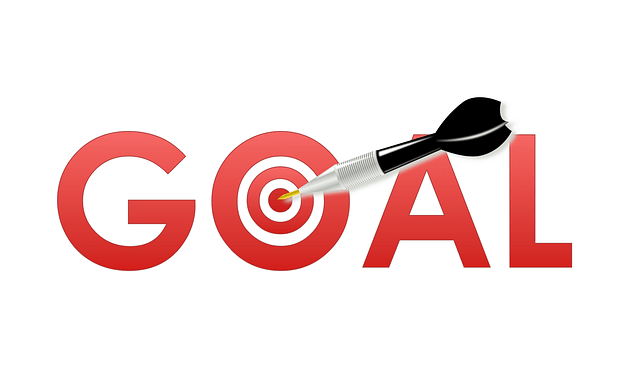Weight loss is one of the top goals that people set for themselves on New Year’s Eve. Maybe you’ve set the same goal for yourself on New Year’s. Unfortunately, according to research, only 8% of people who set goals for the new year will achieve them. But the number of people who are able to lose weight as well as maintain it is extremely low. If you want to learn how to create weight loss goals you can achieve then keep reading.
When asked about their weight loss goals the majority of people will offer up a number…..I want to lose 20 lbs, 50 lb, etc.
Other might have a goal weight in mind.
When asked how they will achieve it they might tell you about the diet that they are going to follow or how many times a week they are going to stop by the gym. So they start off on their planned path and soon discover that this very big goal they have set might be met way off down the road. They run into obstacles that sets them back, get discouraged and give up.

I previously posted about how to create healthy habits by making small changes that you could live with as one of the ways to help meet your weight loss goals. Now I’d like to talk about the goals themselves. What if I told you there was a better way to set goals?
What if there was a way to not only set achievable goals but do it in a way that keeps you from getting discouraged?
What if I told you there was a way to set goals where you could track your progress by something other than a number on the scale?
If you have having trouble meeting your weight loss goals (or any goal for that matter) then it’s time to learn how to set a SMART goal.
SMART stands for:
-
Specific
-
Measurable
-
Achievable
-
Realistic
-
Timed
Let’s take a closer look at each one of these.
SPECIFIC:
When setting a goal be very specific about what you are trying to achieve. Think about it. Write down some details. Think about if there might be an obstacles that would keep you from meeting this goal. It’s one thing to have a goal that you want to run a 10 mile marathon.
But, if you’ve never ran before, is this a goal you can meet or is the lack of experience an obstacle? Perhaps the first step in meeting this type of goal would be to start by running a mile?
Losing weight is not very specific. Losing 10 lbs is specific.
How about eating healthier? That’s not very specific. There’s soooo many ways you can eat healthier. How about to eat more vegetables every day? That’s certainly more specific.
Let’s look at another one. I will reduce my stress levels. Not too specific. I will reduce my stress levels by practicing meditation. That would be more specific.
Stop and think about a goal you’re trying to achieve. Is it specific? If it’s not then how can you make it specific? Write it down and then move on to the next step.
MEASUREABLE:
In order to determine if you are meeting your goal you need something to measure your success. Making your goal measurable means you can see the progress. Let’s take a look at the example goals above and make them measurable.
Losing 10 lbs is specific and it can be measured by saying the goal is to lose 10 lbs in 2 months.
To eat more vegetables every day is more specific and to make it measurable the goal is to eat at least two servings (1/2 cup each) of vegetables every day.
I will reduce my stress levels by practicing meditation becomes I will reduce my stress levels by meditating an hour every day.
ACHIEVABLE:
This part of the goal is where you take some time to think about whether or not the goal is achievable. Or if you really even want to attempt to reach this goal. I know it sounds funny to say that. I’ve seen many times when people will say they are trying to meet a goal that really isn’t something they WANT to do. They just feel that they should do it. An example of this would be someone who decides that there goal is to stop eating dessert. In reality they don’t want to stop altogether. But everyone has been telling them that they should stop because they will be healthier.
Is this goal achievable?
Probably not because this isn’t something that they really want to do. They do want to eat better. Maybe an achievable goal for this person might be to limit themselves to eating dessert once a day. Or a certain number of days a week.
Take a look at your goal. Is it achievable for you? Let’s take a look at the examples we have been discussing.
The goal is to lose 10 lbs in 2 months. Achievable? Yes because it’s not an excessive amount of weight in a short period of time.
To eat at least two servings (1/2 cup each) of vegetables every day. Achievable? Sounds like it would be. The number of servings isn’t too high and the amount of each serving is an average size.
I will reduce my stress levels by meditating an hour every day. Achievable? Well, I’ve never done meditation before. Would an hour every day be too long? Do I even have an hour to spare each day to set aside? Maybe not. Maybe I need to rethink this goal a bit. Perhaps something more achievable for someone who has never meditated before would be to try to meditate for 15 minutes? That sounds like something I could do. So the goal will change to I will reduce my stress level by meditating 15 minutes every day.
REALISTIC:
Stop and think about if this is a realistic goal. Think about the marathon or meditation examples. Is running a 10 mile marathon even realistic for someone who’s never ran before? Would setting aside an hour each day to meditate be realistic for someone who feels like they are already very busy, don’t have much time to spare and has never meditated before? Probably not.
It’s one thing to have a goal that you need to do a bit of work to reach. It’s another thing to set such a grand goal that you will never experience some type of success while trying to reach it. Saving a million dollars is a goal I will probably never reach no matter how much I want to. But, I can start by saving $100 or even $1,000. Those might take some work but they certainly are achievable.
Stop and think about your own personal goal. Is it a realistic one? Is it too grand in scale? Would something a little scaled back be more achievable as you work your way to the larger goal?
TIMED:
In order to judge your success there should be a time frame in which you measure it. This time frame allows you to see if you have been successful in reaching the goal or if perhaps you need to make adjustments. A time frame is necessary if you want to achieve the goal.
 Let’s take a look at our previously discussed goals.
Let’s take a look at our previously discussed goals.
The goal is to lose 10 lbs in 2 months. This goal already has a time frame. In two months time we will be able to see if we reached that goal. We can take our weight each week and record it. At the end of 2 months we can see if we were able to reach that goal. Perhaps to help reach that goal it can be made more specific. I will lose 10 lbs in 2 months by eating 1,600 calories a day. That would be even more specific. And it has an extra element of measuring. You can measure the calories each day to see if you reach the goal.
To eat at least two servings (1/2 cup each) of vegetables every day. We can make this goal measure by adding a time frame. I will eat at least two servings (1/2 cup each) of vegetables every day for the next two weeks. I can write down the vegetables that I eat each day. At the end of two weeks I can check and see if I achieved my goal. If I didn’t I can think about what might have prevented me from reaching it. Perhaps I only like certain vegetables and I didn’t have enough on hand. Maybe I prefer salad over cooked vegetables and need to keep salad on hand. Perhaps I look back and find that not only did I eat two servings every day but there were many days that I ate three! Maybe I can change my goal to eating three every day over the next two weeks and see if I can reach that goal too!
I will reduce my stress level by meditating 15 minutes every day. We can make this timed by adding a length of time. I will reduce my stress level by meditating 15 minutes every day for two weeks. I can write down the days that I meditate and then, in two weeks, check it to see if I’ve reached my goal. Perhaps at the end of two weeks I find that I was only able to meditate three times a week. I feel that it does help me with stress but I didn’t reach my goal. However now I know that 3 days a week is possible and I can update my goal a bit. I will reduce my stress level by meditating 15 minutes 4 days a week over the next two weeks. Or how about this….I not only was able to meditate every day for 15 minutes but I found that I could even work in a little more time. I can update my goal to something like I will meditate for 30 minutes every day over the next two weeks and see how that goes.
How about you? Take a look at your goal and make it timed so you can measure your results and determine if you’ve reached your goal. If you did – great! Now you can decide if you want to continue on with the goal or change it. If you didn’t reach your goal you will be able to evaluate what went on, see what might have prevented you from reaching it and create a new goal.
Using SMART goals can really help you to meet your weight loss goals. Or any goal for that matter.
What are some goals you are looking to achieve?
What kind of SMART goal can you make for them?

[mc4wp_form id=”3690″]
Disclosure: The above post may contain affiliate links. I may earn a small commission from purchases made through these links, at no additional cost to you. Anything recommended on this website is a products I have used and loved. Thank you for supporting Remake My Plate and allowing me to share my experiences with you.



